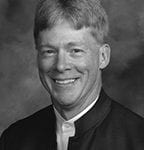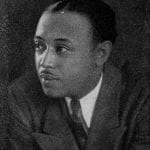Wind Ensemble, Dr. Rodney Dorsey, conductor
8:00 PM, Musical Arts Center – Livestream link
Ra! by David Dzubay

The sun god Ra was the most important god of the ancient Egyptians. Born anew each day, Ra journeyed across the sky in a boat crewed by many other gods. During the day Ra would do battle with his chief enemy, a serpent named Apep, usually emerging victorious, though on stormy days or during an eclipse, the Egyptians believed that Apep had won and swallowed the sun.
Ra! is a rather aggressive depiction of an imagined ritual of sun worship, perhaps celebrating the daily battles of Ra and Apep. There are four ideas presented in the movement: 1) a “skin dance” featuring the timpani and other percussion, 2) a declarative, unison melodic line, 3) a layered texture of pulses, and 4) sunbursts and shines. The movement alternates abruptly between these ideas, as if following the precise dictates of a grand ceremony. – note by David Dzubay
Ra! was last performed at Indiana University in 2015.
Composer David Dzubay is currently professor of music, chair of the Composition Department, and director of the New Music Ensemble at the Indiana University Jacobs School of Music in Bloomington. His music has been performed in the U.S., Europe, Canada, Mexico, and Asia by ensembles including the symphony orchestras of Aspen, Atlanta, Baltimore, Cincinnati, Detroit, Honolulu, Kansas City, Louisville, Memphis, Minnesota, Oregon, Oakland, St. Louis and Vancouver; the American Composers Orchestra, National Symphonies of Ireland and Mexico, New World Symphony, National Repertory Orchestra, and New York Youth Symphony; and ensembles including Le Nouvel Ensemble Moderne (Montreal), Onix (Mexico), Manhattan Brass, Voices of Change (Dallas), the Alexander and Orion String Quartets, the League/ISCM, Earplay, and the San Francisco Contemporary Music Players. His music is published by Pro Nova Music, Dorn, and Thompson Edition and is recorded on the Sony, Centaur, Bridge, innova, Crystal, Klavier, Gia, First Edition, and Indiana University labels.
From Glory to Glory by Kevin Walczyk

From Glory to Glory was commissioned by the Midwest Clinic International Band and Orchestra Conference to honor and celebrate the life of Heather Reu, daughter of Molly and Ray Cramer. The entire work’s melodic and harmonic constructs are derived from pitch structures based on words and folksongs relating specifically to Heather’s life. The work is in seven sections with the primary tonality of each section spelling out the word “Heather.” The first, third, and fifth sections of the work utilize motifs and harmonies based on her complete name – Heather Ellen Cramer Reu, while the second and fourth sections feature two folksongs indigenous to the countries from which Heather adopted her four children. The Vietnamese folksong, Oh, My Beloved! Stay With Me! is featured throughout the second section of the work and the Chinese folksong, White Birds is featured in the fourth section of the work. In the sixth section of the work, these two folksongs, representing Heather’s children, are united with the musical motifs that spell Heather’s name; thus, musically uniting Heather and her children. The seventh section serves as the work’s coda and, similar to the entire composition, reflects the energy, commitment, dedication, love, passion, and spirit that Heather lived her life. This work is dedicated to all those who have been blessed by Heather’s life.
“But we all, with unveiled face, beholding as in a mirror the glory of the Lord, are being transformed into the same image from glory to glory, just as by the Spirit of the Lord” – II Corinthians 3:18 [NKJV] – note by Kevin Walczyk
From Glory to Glory was last performed at Indiana University in 2012.
The Governor’s Own by Alton Augustus Adams, ed. Mark Clague

Born in 1889, Alton Augustus Adams became the first black bandmaster in the United States Navy in 1917 when his all-black Adams Juvenile Band was inducted as the United States Navy Band of the Virgin Islands. At the onset 8of American entry into World War One, the U.S. had purchased the islands from Denmark to deny Germany a submarine base so close to U.S. shores. Adams’s band served as a cultural and social bridge between the islands’ new, all-white American administration and its mostly black native population. Adams was soon in charge of three bands, his own in St. Thomas and two groups on St. Croix. He also volunteered as Supervisor of Music for the islands’ public schools to create its first music curriculum.
Based on the bugle call to attention, the trumpets’ snappy opening four-note motif announces the beginning of The Governor’s Own march and serves to call listeners in preparation for the arrival of the Virgin Islands’ governor. The principal theme of the march was inspired by its original dedicatee, Admiral Joseph Wallace Oman, naval governor of the Virgin Islands from 1919 to 1921. The melody seems to depict the governor who Adams described as a “short, jaunty, snappy sort of fellow” while it similarly echoes the energetic themes of Sousa’s “King Cotton” or “Manhattan Beach.” Adams felt that Sousa’s music perfectly captured the “spirit of militant vigor and courage” emblematic of the march. As a boy, Adams had imagined himself conducting Sousa’s band while listening secretly to phonograph records outside a neighbor’s home. He studied composition and orchestration in part by copying the individual parts to Sousa’s marches into full score. (At the time, conductor’s scores were provided only in abbreviated short score formats.) Originally known as “Governor Oman,” the march was renamed “The Governor’s Own” in time for its initial publication with Carl Fisher in 1922. Acknowledged as one of Adams’s best compositions, “The Governor’s Own” was among the top four best-selling marches for Carl Fisher in 1924 and became the official commencement march of Howard University. In 1963, Adams rededicated the march to the people of the Virgin Islands and its status as music for government occasions on the islands was recognized by the legislature. It is the official march of the islands’ governors, akin to “Hail to the Chief” for the U.S. President, although Adams’s piece may be freely performed on occasions when the governor is not present. – note by Mark Clague
Tonight’s performance marks the Indiana University premiere of The Governor’s Own.
Symphonic Movement by Václav Nelhýbel

Symphonic Movement is dedicated to John Paynter and the Northwestern University Band. Gill Mitchell, a former Assistant Director at The U.S. Army Band, played a recording of Nelhýbel’s Trittico for Paynter, who immediately asked the composer to consider writing a work for Northwestern. Symphonic Movement arrived in the mail five days later. It is believed that Nelhýbel had already started the work but was inspired to complete it. The piece was immediately popular among bands, and Nelhýbel conducted the Arkansas Tech University Band in a performance at the 1967 College Band Directors National convention.
Symphonic Movement is composed in five continuous sections: Adagio, Allegro, Poco meno mosso, Allegro, and Adagio. Nelhýbel described Symphonic Movement as “my first composition for band written completely on a symphonic level.” He opens the work with an eerie and suspenseful introduction; then builds the eight-note fragment that will be the foundation of the work. The piece is highly percussive in nature and features unique material for each instrument family throughout the ensemble. The summation of this material creates a true tour-de-force, with intensity that grows until the final climax of the piece. – program note from Army Field Band
Symphonic Movement was last performed at Indiana University in 2018.
In the Offing by Joel Love

The word “offing” has two meanings: 1) the more distant part of the sea seen from the shore, beyond the anchoring ground; and 2) the near or foreseeable future. When I was writing this piece during my Copland House Residency in the summer of 2021, I frequently went to Charles Point on the Hudson to run in the evenings and watch the boats come in and out of the harbor. The sunset colors above the hills and the views from the shore were inspiring and are where this piece first got its genesis. Over the past 18 months, everyone has been challenged by the pandemic. This piece is an expression of hope and forward-looking optimism about the full return to making music that is in the near or foreseeable future. Like many other composers, it has been difficult to write while in semi or full lockdown, but when I was at Copland House, I was reminded of why I write music; I consider composing an awesome privilege and to be able to create something that we can all commune with in the moment is truly wonderful. I was reminded of one of my favorite Einstein quotes: “The most beautiful thing we can experience is the mysterious. It is the source of all true art and all science. He to whom this emotion is a stranger, who can no longer pause to wonder and stand rapt in awe, is as good as dead: his eyes are closed.” As we return from our homes and back into the wonderful world of making music again, I hope that we are all rapt in awe, can open our eyes and ears, and ultimately are grateful for this wonderful thing that I took for granted: the simple act of making music together. – note by Joel Love
In the Offing was commissioned by and dedicated to the American Bandmasters Association and the University of Florida Bands. This is the Indiana University premiere.
Double Concerto for Alto Saxophone, Euphonium, and Winds by Anthony O’Toole

Commissioned by Will Gillespie (saxophonist) and Mike Waddell (euphoniumist), this work is inspired by paintings and photographs of Chicago in the 1930s. The first movement is a musical portrait of the city skyline as it is built higher and higher with each additional skyscraper, the music of the bustling streets during daytime. The second movement, Nocturne, is all about the gritty nightlife, hot jazz, and gangsters. The concluding movement is inspired by the painting “Steel Mills at Night” by Richard A. Chase and shows the industrial side of this Midwestern metropolis. All the material is revisited in the finale. – note by Anthony O’Toole
Anthony O’Toole’s music has been commissioned and performed by musicians and ensembles all around the world. His music for wind band has been performed and recorded by some of the finest bands including the United States Coast Guard Band, The Kansas State University Wind Ensemble, “The President’s Own” United States Marine Band, and many others. Anthony currently resides in Los Angeles, CA where he fulfills his commissions for new works and does orchestrations and arrangements as a freelance writer; he also serves as Composer-in-Residence for the Carson Symphony Orchestra and Staff Arranger for the Southern California Brass Consortium.
This is the first performance of Double Concerto at Indiana University.
from Three Visions: Summerland by William Grant Still

Summerland was originally the second of Three Visions for piano (1936) and was recast in 1937 by the composer for different instrumentation. Still asks the listener to be aware that each of the visions are real only to the dreamer. Summerland depicts the promised beauty of the afterlife.
Composer William Grant Still was often associated with the Harlem Renaissance. He matured as a composer in Harlem in the 1920s and is known for blending African American musical idioms and spirituals with European styles and forms. With more than 150 compositions to his name, he received numerous prestigious awards and notable commissions throughout his lifetime. He was also the first African American to conduct a major American orchestra (Los Angeles Philharmonic) and to have an opera performed by a major opera company (New York City Opera). – note courtesy of the Houston Symphony
This is the first performance of Summerland by the Indiana University Department of Bands.
Symphony No. 2 by Frank Ticheli

The symphony’s three movements refer to celestial light — Shooting Stars, the Moon, and the Sun.
Although the title for the first movement, “Shooting Stars,” came after its completion, I was imagining such quick flashes of color throughout the creative process. White-note clusters are sprinkled everywhere, like streaks of bright light. High above, the Eb clarinet shouts out the main theme, while underneath, the low brasses punch out staccatissimo chords that intensify the dance-like energy. Fleeting events of many kinds are cut and pasted at unexpected moments, keeping the ear on its toes. The movement burns quickly, and ends explosively, scarcely leaving a trail.
The second movement, “Dreams Under a New Moon,” depicts a kind of journey of the soul as represented by a series of dreams. A bluesy clarinet melody is answered by a chant-like theme in muted trumpet and piccolo. Many dream episodes follow, ranging from the mysterious, to the dark, to the peaceful and healing. A sense of hope begins to assert itself as rising lines are passed from one instrument to another. Modulation after modulation occurs as the music lifts and searches for resolution. Near the end, the main theme returns in counterpoint with the chant, building to a majestic climax, then falling to a peaceful coda. The final B-flat major chord is colored by a questioning G-flat.
The finale, “Apollo Unleashed,” is perhaps the most wide-ranging movement of the symphony, and certainly the most difficult to convey in words. On the one hand, the image of Apollo, the powerful ancient god of the sun, inspired not only the movement’s title, but also its blazing energy. Bright sonorities, fast tempos, and galloping rhythms combine to give a sense of urgency that one often expects from a symphonic finale. On the other hand, its boisterous nature is also tempered and enriched by another, more sublime force, Bach’s Chorale BWV 433 (Wer Gott vertraut, hat wohl gebaut). This chorale — a favorite of the dedicatee, and one he himself arranged for chorus and band — serves as a kind of spiritual anchor, giving a soul to the gregarious foreground events. The chorale is in ternary form (ABA’). In the first half of the movement, the chorale’s A and B sections are stated nobly underneath faster paced music, while the final A section is saved for the climactic ending, sounding against a flurry of 16th-notes.
My second symphony is dedicated to James E. Croft upon his retirement as Director of Bands at Florida State University in 2003. It was commissioned by a consortium of Dr. Croft’s doctoral students, conducting students and friends as a gesture of thanks for all he has given to the profession. – note by Frank Ticheli
Symphony No. 2 was last performed in its entirety at Indiana University in 2006.

Leave a Reply